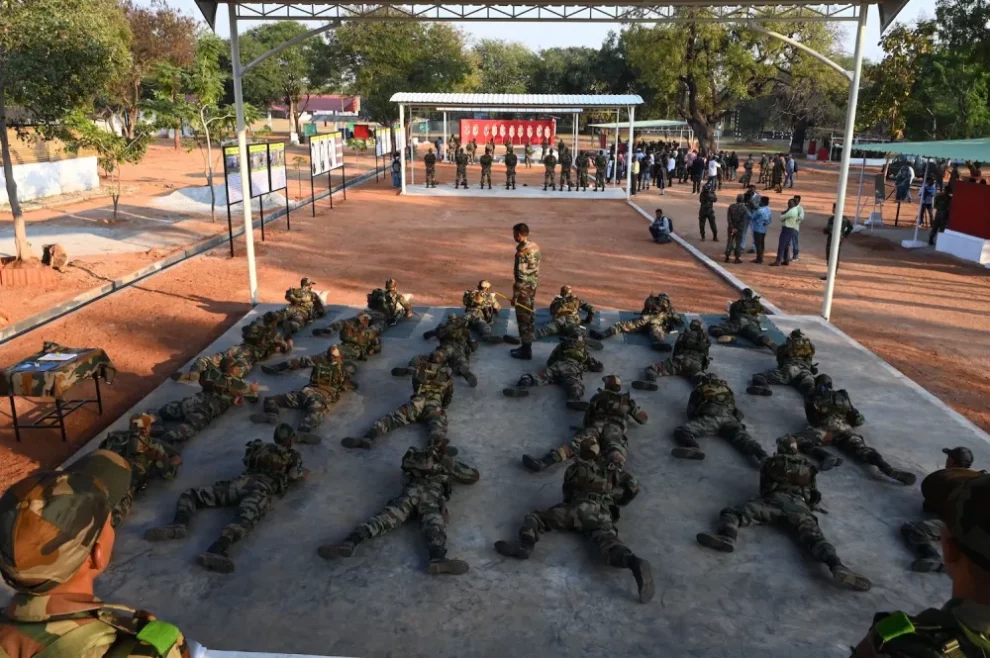China’s People’s Liberation Army (PLA), while participating in the Shangri-La Dialogue, Asia’s premier security summit, made a claim that the Indian military poses no credible threat to China and is unlikely to do so in the upcoming decades. The assertion came as a statement amid increasing geopolitical tensions between the two nations, particularly along their shared Himalayan border.
The PLA representative, senior colonel Zhao Xiaozhuo, explicitly stated that India’s defense manufacturing and military modernization endeavors lack the depth to counter Beijing’s sophisticated and systematic defense industry platforms. A fundamental critique of the Indian military’s capabilities was aimed at India’s relatively weaker industrial infrastructure. The colonel questioned India’s indigenous development of weapon systems, specifically its tanks, aircraft, and warships, implying that India’s reliance on foreign technologies undermined its military prowess.
These remarks, given on the sidelines of the Shangri-La Dialogue, hint at China’s strategic positioning in the geopolitical arena. While the PLA’s comments downplay India’s military capabilities, they simultaneously underline China’s preference for dialogue, exchanges, and negotiations to resolve territorial disputes. This narrative is evident in the ongoing standoff along the disputed Himalayan border, where both countries have stationed thousands of military personnel and heavy artillery.
Despite the comments by the PLA, it’s noteworthy that India’s strategic posture and diplomatic policy have prevented it from becoming a “loyal partner” to any power bloc, including the United States.
Interestingly, the Chinese statement comes amid ongoing tensions along the Indo-China border, more than two years since a deadly face-off in Ladakh. Furthermore, the two countries have yet to make any substantial progress in resolving the border confrontation that started in mid-2020, despite 14 rounds of military talks. This scenario points to a precarious balance, with the rhetoric not quite aligning with ground realities.
The statement’s impact on regional dynamics is multifaceted. On one hand, it could lead to a softening of the standoff, given China’s stated preference for dialogue and negotiation. On the other hand, it may exacerbate tensions by being perceived as a slight to India’s military capabilities and national pride. Additionally, it could spur India to boost its military modernization efforts, potentially leading to a localized arms race.
China and India have witnessed a substantial growth in bilateral trade and investment over the years. China has emerged as India’s fourth-largest export market, and there has been a surge in investments between the two countries. However, the economic interdependence between China and India does not mitigate the military security concerns. Trade and economic ties often coexist with strategic competition and geopolitical considerations. The economic ramifications of the Chinese military’s perception of India can be seen in the context of strategic infrastructure projects, such as the China-Pakistan Economic Corridor (CPEC), which has implications for regional economic dynamics and India’s security concerns.
The security dilemma between China and India remains persistent despite efforts to improve bilateral relations. The two countries have a history of territorial disputes, most notably regarding the border areas of Aksai Chin and Arunachal Pradesh. These disputes, coupled with China’s military modernization efforts and assertiveness in the South China Sea, contribute to India’s security concerns. India has taken measures to enhance its military capabilities, including infrastructure development along the border regions and strengthening ties with other countries in the region to balance China’s influence. The Chinese military’s perception of India as a strategic competitor influences its defense strategy and posture, which in turn affects regional security dynamics.
The Chinese military’s perception of India also has political ramifications. China’s increasing engagement with neighboring countries, such as Pakistan, Sri Lanka, and Nepal, has raised concerns in India about encirclement and the projection of Chinese influence in its immediate neighborhood. China’s Belt and Road Initiative (BRI) and its maritime activities in the Indian Ocean have implications for India’s regional political influence and its role as a dominant power in South Asia. India has responded by deepening its strategic partnerships with countries like the United States, Japan, and Australia through initiatives like the Quad, aimed at promoting a free and open Indo-Pacific region. The Chinese military’s perception of India as a regional competitor influences its engagement with other countries, creating a complex geopolitical landscape in the region.
Lastly, while the PLA’s statement downplaying India’s military capabilities has captured global attention, its true import lies in its potential to reshape geopolitical relationships and power dynamics in the region. As the tension continues to simmer along the disputed border, the rhetoric will likely continue to evolve, informing and being informed by the on-ground realities. The balance of power in the Indo-Pacific region might be in flux, but the dialogue generated by this statement serves to keep the international community keenly focused on the developments.
Source : Modern Diplomacy










